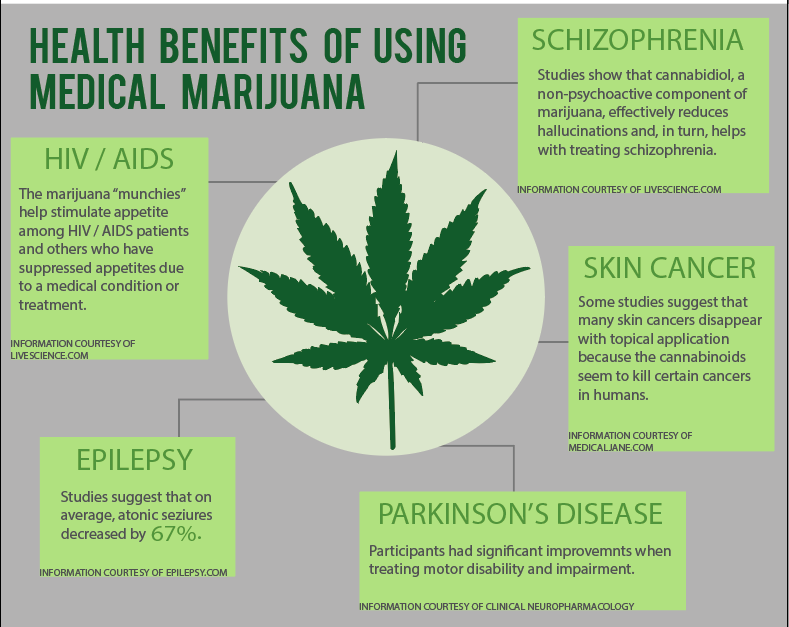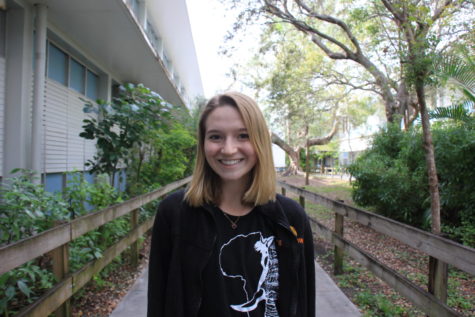Legalize it
August 30, 2016
For the second time in Florida’s history, medical marijuana is on the ballot, and this year, it awaits legalization. In 2015, 58 percent of voters favored the legalization of medical marijuana, but the bill failed to reach the minimum 60 percent needed to become a law. Because of its presence on the ballot again this fall, it is imperative voters become educated on what exactly medical marijuana is.
The words “medical marijuana” are often tabooed, but the medical drug and the recreational drug have clear differences.
Legalizing medical marijuana will not turn Florida into a stoner state with hotboxed hospital rooms and cancer patients ripping bongs while watching Cheech and Chong. Nor will it cause users squinty eyes and endless giggles. Rather, the legalization of medical marijuana will prevent children who suffer from epilepsy from having tens or hundreds of daily seizures. It will give cancer patients undergoing chemotherapy the appetite they have been robbed of by their illnesses. It will give an elderly man with Parkinson’s disease pain relief and anti-anxiety medicine, without the side effects of traditionally used prescription medications.
How is that possible? Well, the “high” one gets from the use of marijuana results from smoking and/or digesting tetrahydrocannabinol (THC), but, the presence of THC in medical marijuana is almost nonexistent. The government regulates how much THC is in the cannabis which means (surprise!) medical marijuana does NOT make the user high. Any sort of ‘why should cancer patients be getting stoned?’ argument is invalid. Components of medical marijuana naturally found in the human body provide scientifically-backed-up-relief to those with chronic illnesses. There are over 400 natural compounds in medical marijuana, but of those 400, 80 are found only in cannabis. These compounds, known as cannabinoids, work by attaching to receptors in the brain.
Within these cannabinoids, the effects of medical marijuana vary, thus the birth of strains and cross-bred strains. Different strains of medical marijuana provide different results and each strain hits its own specific target. Some strains act as antidepressants, while others fight nausea. If a patient needs relief from multiple problems, the cannabis strains are crossbred. Combining multiple strands can combat multiple issues with a specific hybrid.
It is better to use a natural substance such as medical marijuana rather than lacosamide, a prescription medication used in patients with epilepsy. One can be grown in a garden and the other is chemically engineered in a lab. Medical marijuana is a natural, more effective medicine with far less side effects. A substance generated from the earth that has a surplus of medicinal purposes is pure, and yet, still illegal in the state of Florida. But why? Marijuana is classified as a schedule one substance, which is defined as drugs with no currently accepted medical use and high potential for abuse. But the Drug Enforcement Administration cannot change marijuana’s legal classification unless the Food and Drug Administration finds valid medical use. And the FDA cannot find medical use because conducting research under marijuana’s restricting legal status has proven extremely difficult. Lawmakers have created a revolving door when it comes to legalizing medical marijuana. No one can move forward.
Even if it is unaccepted, the benefits of medical marijuana are known. But here is the worst part. With other typically prescribed drugs used by terminally ill patients, serious, even fatal, side effects may occur. Whereas side effects of medical marijuana can include drowsiness and euphoria! How terrible, a chronically ill patient may actually get a peaceful nights’ rest and feelings of excitement and happiness. This drug must be a menace to society.
On the ballot is a natural substance with minimal side effects proven to be more effective than morphine in pain relief. An option that can add to the lifespan of Parkinson’s patients. An option that makes life bearable for thousands with terminal illnesses.
Not to mention, medical marijuana is already legal in 23 states and counting, and uses of the natural substance trace back all the way to 2373 B.C. in China where its medicinal agents provided relief from gout and malaria to emperor Shen Neng. With thousands of years of use and scientific studies concluding medical marijuana’s benefits, keeping medical marijuana illegal is a crime within itself.
Who makes it so unbelievably difficult to make medical marijuana legal? Private and public donors put millions of dollars into the opposing side. In 2015, when medical marijuana was first on the ballot, the opposition to medical marijuana legalization was much louder. This time around, it would seem as though they may have come to their senses, considering the opposers protest more quietly.
With the legalization of medical marijuana comes the creation of jobs. Farmers, drivers, dispensary workers and all of the people working on the steps in between will be employed. The downsides of legalizing medical marijuana, if any, are clearly insignificant compared to the mass benefits.
Amendment 2 has taken too long. Legalize it.








